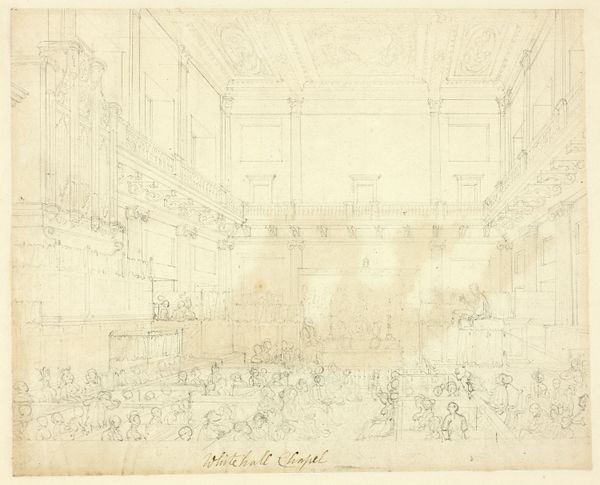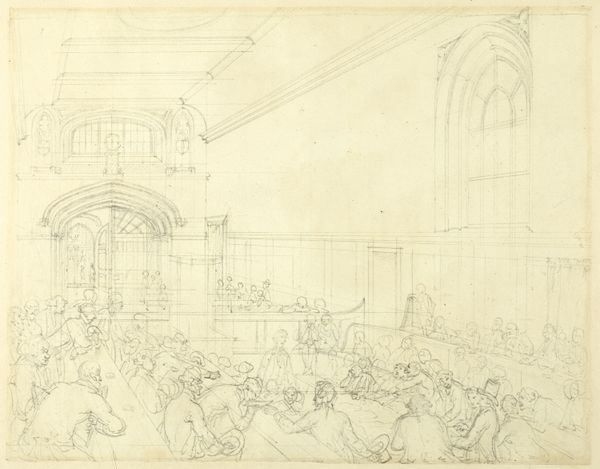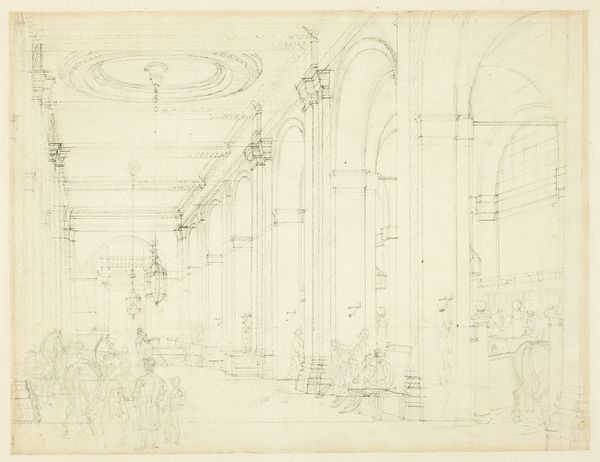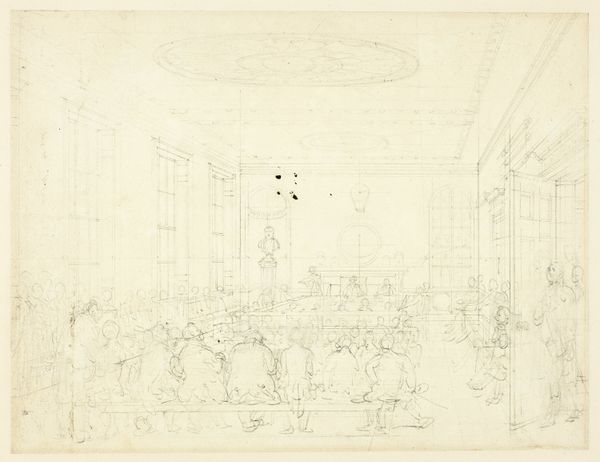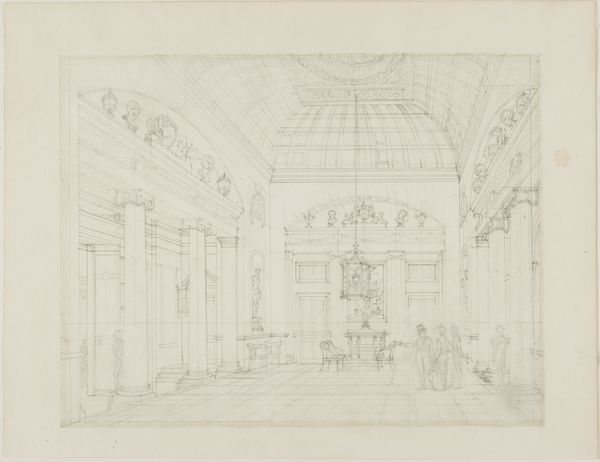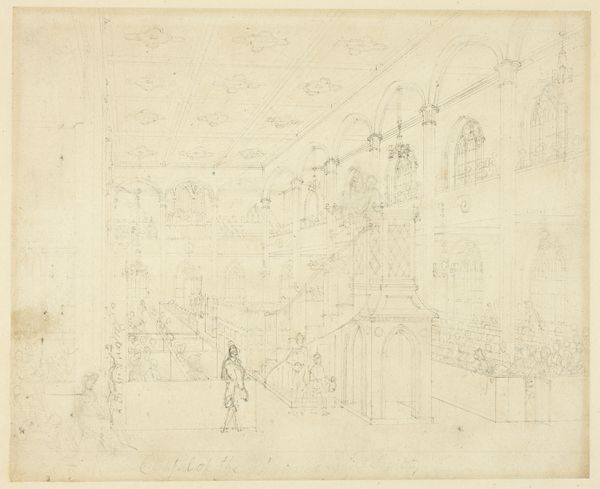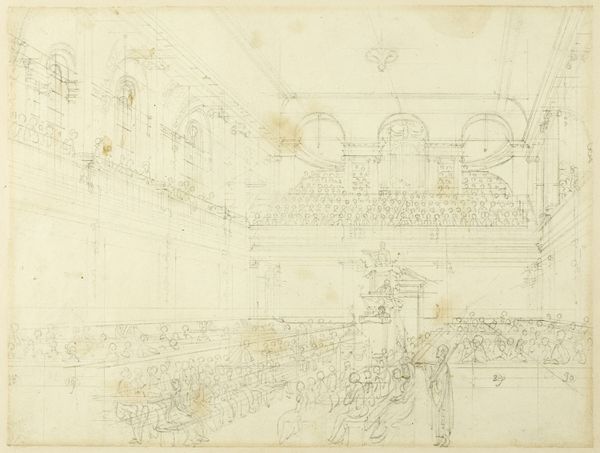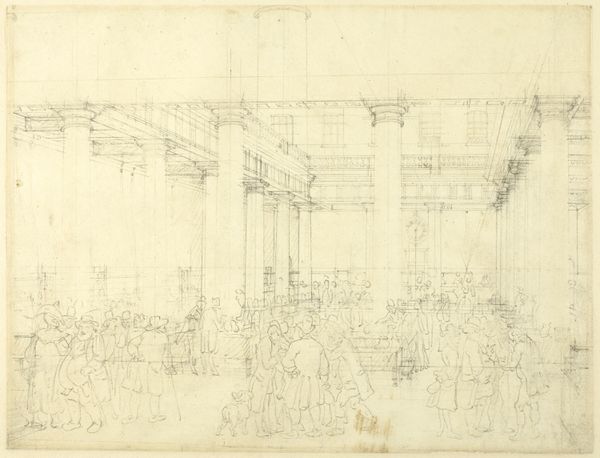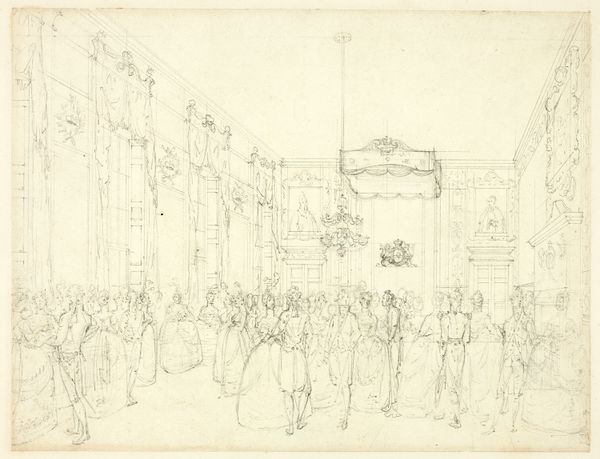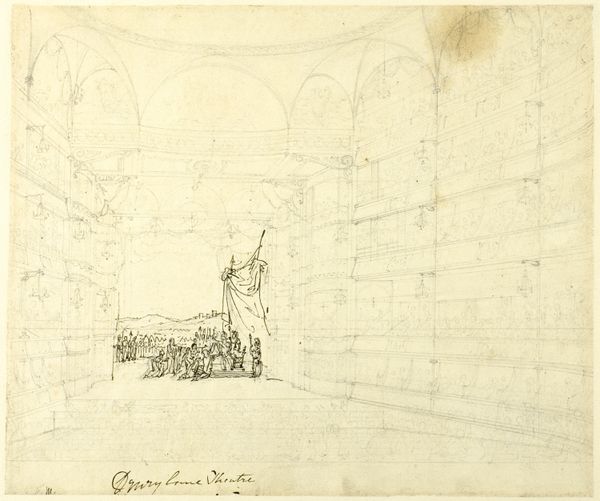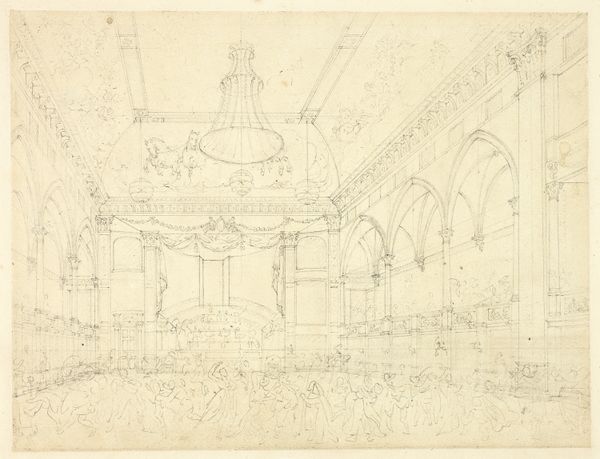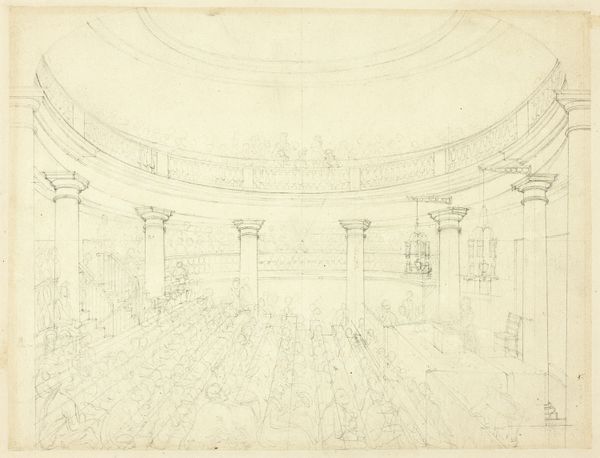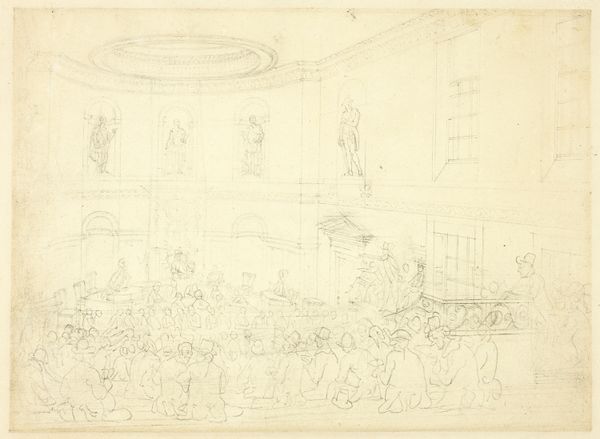
Study for Freemason's Hall, Great Queen Street, from Microcosm of London c. 1808
0:00
0:00
drawing, print, paper, pencil, graphite, architecture
#
drawing
#
neoclacissism
# print
#
etching
#
paper
#
pencil
#
graphite
#
cityscape
#
architecture
Dimensions: 198 × 260 mm
Copyright: Public Domain
Editor: Here we have Augustus Charles Pugin’s "Study for Freemason's Hall, Great Queen Street, from Microcosm of London," created around 1808 using pencil, graphite, and etching on paper. There’s almost a ghostly feel to this interior, maybe because it’s a preliminary study. All these figures lined up – it gives off a very formal, almost austere vibe. What do you see in this piece? Curator: Well, considering it's a Freemason's Hall, the formality aligns with the organisation's image and traditions. Pugin, known for his architectural renderings, presents not just a building but an institution. Consider how this hall, and similar structures, projected power and influence in 19th-century London. This is also at a time of burgeoning publishing – and works like the ‘Microcosm’ allowed a growing middle class access to images of elite spaces. Do you think the print democratizes access, or simply reinforces a social hierarchy by displaying exclusive spaces? Editor: That’s interesting. I suppose both are happening simultaneously. On the one hand, it’s made visible, yet it also reinforces that this isn't a space accessible to everyone. How do you think this impacts its reception then and now? Curator: The very act of depicting this interior—making it public—shifts its cultural role. Initially intended for members only, the print transforms it into a spectacle for public consumption. In the present day, the drawing also lets us think about how architectural spaces have been deployed to create group identities. Now, in a world of social media, what do we even consider as exclusive anymore? Editor: That's a good point. The boundaries are certainly much more blurred today. It’s almost as if this drawing provides a glimpse into the history of controlled visibility, which resonates so differently now. Curator: Exactly. Art like this can offer surprising insights into changing cultural values around access and exclusivity, even today.
Comments
No comments
Be the first to comment and join the conversation on the ultimate creative platform.
